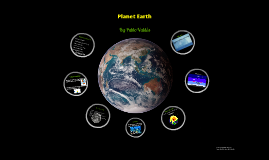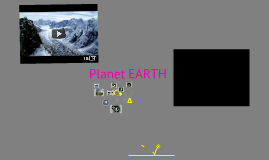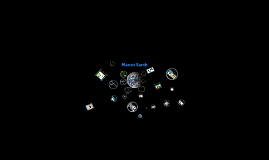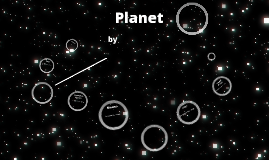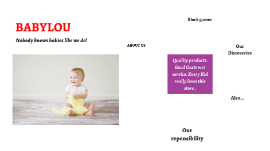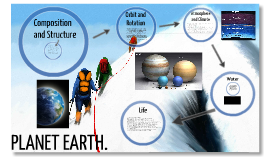Planet Earth
Transcript: PLANET EARTH. Composition and Structure Orbit and Rotation The moon rotates around the earth about every 28 days. The moon also has a 5 degree tilt, without it we would see an eclipse every two weeks Atmosphere and Climate Earths Atmosphere is made up of 78% nitrogen, 21% oxygen, and about 1% of other gaseous molecules The atmosphere is constantly thinning into outerspace Average temperature on earth is 14* C The surface pressure is 101.325 kPa Heat from the sun drives the weather and climate of earth, heat redistribution Ocean currents also are strong factors in creating earths various climates Earth has five basic climate zones: Humid Tropics, Arid, Humid Middle Latitudes, Continental and Cold Polar Ozone Layer- Protects life on earth from UV rays from space, without this there might be no life on earth Levels of the Atmosphere: Troposphere, Stratosphere, Mesosphere, and Thermosphere Magnetic Field- Originates from Earths northern and souther poles, it is created by the outer core where the heat of conducting materials generates electric currents The magnetic field protects Earth from solar radiation and winds that would otherwise kill all life on Earth Whenever charged particles or plasma enters the atmosphere at the magnetic poles it creates an aurora Earth's atmosphere plays a vital role in its ability to sustain life, withouth this there would be no life on Earth Water Life Earth is the only known planet with life Life on earth is divided into two parts: Non-Cellular Life and Cellular Life Cellular Life: Bacteria, Archaea, Eukarya- Protista, Fungi, Plantae, and Animalia Non-Cellular Life: Viruses Life on Earth is believed by some to have originated from chemical reactions that synthesized some amino acids and other organic compounds from inorganic precursors Earth surface temperature and atmosphere presented an idle environment for life to form There is no on defition for life so it is determined based on certain characteristics Homeostasis, Organization, Metabolism, Growth, Response to Stimuli, Reproduction Necessary components for life: Energy, Water, Temperature, Atmosphere, Gravity, Nutrients, and UV solar radition protection Necessary Chemicals: Carbon, Hydrogen, Oxygen, Nitrogen, Phosphorous, and Sulfur Theories as to why life exists: Materialism, Hylomorphism, and Vitalism Earth orbits the Sun at a distance of 150 million kilometers every 365.2564 solar days. The earth is on a 23 degree tilt making it possible for us to have the 4 seasons. The cooling of the primordial Earth to the point where the outgassed volatile components were held in an atmosphere of sufficient pressure for the stabilization and retention of liquid water. Earth is the only planet that we know of with water on its surface The question of the origin of water on Earth, or the question of why there is clearly more water on the Earth than on the other planets of the Solar System, has not been clarified. There are several acknowledged theories as to how the world's oceans were formed over the past 4.6 billion years. The orbital speed of the Earth averages 29.8 km/s (107,000 km/h), which is fast enough to cover the planet's diameter in seven minutes Part of the young planet is theorized to have been disrupted by the impact which created the Moon that may have caused a certain area on the earth to melt. Earth is a oblate spheroid rock planet Largest of the 4 inner planets The most dense of all the inner planets The only planet that we know of that has plate tectonics The inside of Earth is divided into layers Layers of the Earth: Crust, Upper Mantle, Mantle, Outer Core, Core The center core is solid 70% of Earth's surface is covered by water 30% not covered by water consists of mountains, deserts, plains, and plateaus







